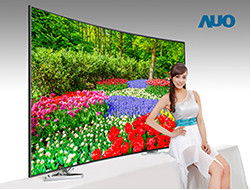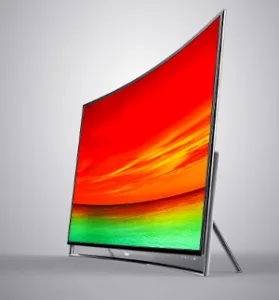The new UHD TV specification calls for an expanded color gamut called BT2020. But no current TVs can meet the specification because the red, green and blue primaries are specified without a tolerance. And, since they are located on the spectral locus, only laser sources can produce the full color gamut – but with speckle, which is unacceptable.

At SID’s DisplayWeek, 3M showed the results of testing it had done to look at the range of tolerances around these 2020 primaries to find out how much these primaries can move to be “visually indistinguishable” to an observer. This work has been expanded recently and now 3M plans to present this new work at the SMPTE Fall conference. In addition, it plans to call for this range of primaries to be adopted into the BT2020 color standard.
To learn more, we spoke with David Lamb, Senior Physics Research Specialist at 3M. He noted that this week, Hisense announced its new 65” curved UHD-TV that features HDR and wide color gamut using the QDEF film supplied by 3M and quantum dot materials supplied by Nanosys. In addition, AUO has announced it will offer UHD curved panels with the same QDEF film with HDR capability in 65”, 75” and 85” sizes.
 The Hisense TV offers outstanding performance at a very competitive price, and Lamb believes it is the only HDR TV to meet the EnergyStar requirements. And a big reason for that is the high efficiency of the quantum dots. EnergyStar compliance is a big deal with utilities in many states actually paying retailers a small fee to sell compliant TVs over non-compliant TVs.
The Hisense TV offers outstanding performance at a very competitive price, and Lamb believes it is the only HDR TV to meet the EnergyStar requirements. And a big reason for that is the high efficiency of the quantum dots. EnergyStar compliance is a big deal with utilities in many states actually paying retailers a small fee to sell compliant TVs over non-compliant TVs.
Lamb noted that Hisense and AUO are specing the color gamut of the TVs using a figure of 100% of the NTSC color gamut criteria, probably because they do not want to say they only meet 93.7% of the 2020 standard.
TV makers want to be able to say they meet the 2020 specification, but they need a little help in the form of some tolerances with the ultra-pure primaries – which is why 3M is coming to the rescue.
Lamb told us that with a small change in the color filter manufacturing and the adoption of the tolerances they are recommending, current quantum dot TVs will be 100% 2020 compliant (or meet 96-97% of the current 2020 standard).
Is it realistic to ask the panel makers to change their color filter formulations, I asked Lamb? “Yes, they would be willing to change to become compliant, along with the relaxation on the primaries. It is mostly the green filter that has to change. The peak wavelength can stay the same, but the cut off on the blue side of the filter needs to be sharper to reduce leakage into the blue channel. The filters are available to do this, but it is a process and material change at the fabs, so they will be cautious in doing the change. However, it can be done in one to two quarters once committed,” concluded Lamb.
How long it might take SMPTE to review and consider the tolerances becoming a standard is unknown.
Can other backlight technologies achieve 2020 compliance with the new proposed tolerances and color filter changes, we asked? “All quantum dot approaches can do it, but other methods will be hard pressed to meet this criteria”, noted Lamb.
 That may create some push back from industry as it forces them to adopt quantum dots in the near term until some alternatives are developed.
That may create some push back from industry as it forces them to adopt quantum dots in the near term until some alternatives are developed.
On the other hand, we have heard talk about TV makers adopting the P3 color gamut as the improvement over 709 vs. adopting 2020. This is more readily achievable with several backlight approaches and is compatible with the grading of movies today, so there is lots of content available.
According to Lamb, the Hisense TV covers more than 100% of the volume of the P3 gamut but is only 95% compliant to the specific P3 volume because of the choice of primaries.
This is an interesting discussion area that we will be following. – Chris Chinnock

